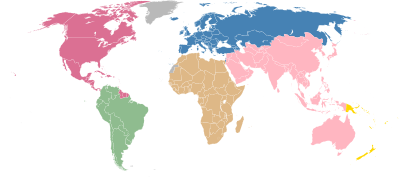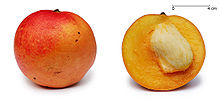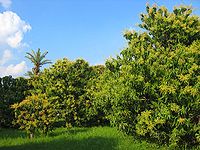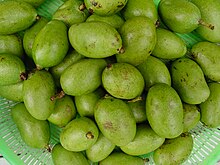| Homoeopathy is nonsense, say British doctors | |
| London, June 30, PTI: | |
| Millions in India and elsewhere swear by homoeopathy, but the British Medical Association says it is ''nonsense'' and should be banned from use in the National Health Service. | |
| The NHS should stop funding homoeopathy and it should no longer be marketed as a medicine in pharmacies on the ground that it is little more than ‘pernicious nonsense’, according to doctors at the annual conference of the BMA in Brighton. BMA doctors committee vice-chair Tom Dolphin, who first proposed banning homoeopathy at the BMA annual junior doctors conference in May, said: “I got into trouble for saying at the juniors conference that homoeopathy is witchcraft.” Criticism Piling on criticism against homoeopathy, Dolphin said: “I take that back and apologise to the witches I apparently offended by association. Homoeopathy isn’t witchcraft — it is nonsense on stilts. It is pernicious nonsense that feeds into a rising wave of irrationality that threatens the hard won gains of the enlightenment, and the scientific method.” | |
Health Is not just a absence of disease or infirmity but incorprates a complete physical, mental &spritual health.Some even include social and economic health as well.
Wednesday, June 30, 2010
HOMEOPATHY A HOAX
FIFA
The International Federation of Association Football (French: Fédération Internationale de Football Association), commonly known as FIFA (usual English pronunciation: /ˈfiːfə/), is the international governing body of association football. Its headquarters are located in Zürich, Switzerland, and its current president is Sepp Blatter. FIFA is responsible for the organisation and governance of football's major international tournaments, most notably the FIFA World Cup, held since 1930.
FIFA has 208 member associations, three more than the International Olympic Committee and five fewer than the International Association of Athletics Federations.
The need for a single body to oversee the game became apparent at the beginning of the 20th century with the increasing popularity of international fixtures. FIFA was founded in Paris on 21 May 1904; the French name and acronym remain, even outside French-speaking countries. The founding members were Belgium, Denmark, France, The Netherlands, Spain, Sweden and Switzerland. Also, that same day, the German Association declared its intention of affiliating through a telegram. Its first president was Robert Guérin.
Guérin was replaced in 1906 by Daniel Burley Woolfall from England, by now a member association. The next tournament staged, the football competition for the 1908 Olympics in London was more successful, despite the presence of professional footballers, contrary to the founding principles of FIFA.
Membership of FIFA expanded beyond Europe with the application of South Africa in 1908, Argentina and Chile in 1912, and Canada and the United States in 1913.
During World War I, with many players sent off to war and the possibility of travel for international fixtures severely limited, there were few international fixtures, and the organisation's survival was in doubt. Post-war, following the death of Woolfall, the organisation was run by Dutchman Carl Hirschmann. It was saved from extinction, but at the cost of the withdrawal of the Home Nations (of the United Kingdom), who cited an unwillingness to participate in international competitions with their recent World War enemies. The Home Nations later resumed their membership.
The FIFA collection is held by the National Football Museum in England.
FIFA's supreme body is the FIFA Congress, an assembly made up of representatives from each affiliated member association. The Congress assembles in ordinary session once every year and, additionally, extraordinary sessions have been held once a year since 1998. Only the Congress can pass changes to FIFA's statutes.
Congress elects the President of FIFA, its General Secretary and the other members of FIFA's Executive Committee. The President and General Secretary are the main officeholders of FIFA, and are in charge of its daily administration, carried out by the General Secretariat, with its staff of approximately 280 members.
FIFA's Executive Committee, chaired by the President, is the main decision-making body of the organisation in the intervals of Congress. FIFA's worldwide organisational structure also consists of several other bodies, under authority of the Executive Committee or created by Congress as standing committees. Among those bodies are the Finance Committee, the Disciplinary Committee, the Referees Committee, etc.
Aside from its worldwide institutions (presidency, Executive Committee, Congress, etc.) there are six confederations recognised by FIFA which oversee the game in the different continents and regions of the world. National associations, and not the continental confederations, are members of FIFA. The continental confederations are provided for in FIFA's statutes. National associations must claim membership to both FIFA and the confederation in which their nation is geographically resident for their teams to qualify for entry to FIFA's competitions (with a few geographic exceptions listed below):
Guyana and Suriname have always been CONCACAF members despite being South American countries.
In total, FIFA recognises 208 national associations and their associated men's national teams as well as 129 women's national teams; see the list of national football teams and their respective country codes. Curiously, FIFA has more member states than the United Nations, as FIFA recognises several non-sovereign entities as distinct nations, such as the four Home Nations within the United Kingdom or politically disputed territories such as Palestine[2]. The FIFA World Rankings are updated monthly and rank each team based on their performance in international competitions, qualifiers, and friendly matches. There is also a world ranking for women's football, updated four times a year.
FIFA has 208 member associations, three more than the International Olympic Committee and five fewer than the International Association of Athletics Federations.
The need for a single body to oversee the game became apparent at the beginning of the 20th century with the increasing popularity of international fixtures. FIFA was founded in Paris on 21 May 1904; the French name and acronym remain, even outside French-speaking countries. The founding members were Belgium, Denmark, France, The Netherlands, Spain, Sweden and Switzerland. Also, that same day, the German Association declared its intention of affiliating through a telegram. Its first president was Robert Guérin.
Guérin was replaced in 1906 by Daniel Burley Woolfall from England, by now a member association. The next tournament staged, the football competition for the 1908 Olympics in London was more successful, despite the presence of professional footballers, contrary to the founding principles of FIFA.
Membership of FIFA expanded beyond Europe with the application of South Africa in 1908, Argentina and Chile in 1912, and Canada and the United States in 1913.
During World War I, with many players sent off to war and the possibility of travel for international fixtures severely limited, there were few international fixtures, and the organisation's survival was in doubt. Post-war, following the death of Woolfall, the organisation was run by Dutchman Carl Hirschmann. It was saved from extinction, but at the cost of the withdrawal of the Home Nations (of the United Kingdom), who cited an unwillingness to participate in international competitions with their recent World War enemies. The Home Nations later resumed their membership.
The FIFA collection is held by the National Football Museum in England.
Structure
Main article: List of FIFA Member Associations
FIFA is an association established under the Laws of Switzerland. Its headquarters are in Zürich.FIFA's supreme body is the FIFA Congress, an assembly made up of representatives from each affiliated member association. The Congress assembles in ordinary session once every year and, additionally, extraordinary sessions have been held once a year since 1998. Only the Congress can pass changes to FIFA's statutes.
Congress elects the President of FIFA, its General Secretary and the other members of FIFA's Executive Committee. The President and General Secretary are the main officeholders of FIFA, and are in charge of its daily administration, carried out by the General Secretariat, with its staff of approximately 280 members.
FIFA's Executive Committee, chaired by the President, is the main decision-making body of the organisation in the intervals of Congress. FIFA's worldwide organisational structure also consists of several other bodies, under authority of the Executive Committee or created by Congress as standing committees. Among those bodies are the Finance Committee, the Disciplinary Committee, the Referees Committee, etc.
Aside from its worldwide institutions (presidency, Executive Committee, Congress, etc.) there are six confederations recognised by FIFA which oversee the game in the different continents and regions of the world. National associations, and not the continental confederations, are members of FIFA. The continental confederations are provided for in FIFA's statutes. National associations must claim membership to both FIFA and the confederation in which their nation is geographically resident for their teams to qualify for entry to FIFA's competitions (with a few geographic exceptions listed below):
- AFC – Asian Football Confederation in Asia and Australia
- CAF – Confédération Africaine de Football in Africa
- CONCACAF – Confederation of North, Central American and Caribbean Association Football in North America and Central America
- CONMEBOL – Confederación Sudamericana de Fútbol in South America
- OFC – Oceania Football Confederation in Oceania
- UEFA – Union of European Football Associations in Europe.
Guyana and Suriname have always been CONCACAF members despite being South American countries.
In total, FIFA recognises 208 national associations and their associated men's national teams as well as 129 women's national teams; see the list of national football teams and their respective country codes. Curiously, FIFA has more member states than the United Nations, as FIFA recognises several non-sovereign entities as distinct nations, such as the four Home Nations within the United Kingdom or politically disputed territories such as Palestine[2]. The FIFA World Rankings are updated monthly and rank each team based on their performance in international competitions, qualifiers, and friendly matches. There is also a world ranking for women's football, updated four times a year.
Sunday, June 20, 2010
MANGO
This article is about the fruit. For other meanings of the word, see Mango (disambiguation).
| Mango | |
|---|---|
 | |
| Australian Mango with its cross section | |
| Scientific classification | |
| Kingdom: | Plantae |
| Division: | Angiospermae |
| Class: | Magnoliopsida |
| Order: | Sapindales |
| Family: | Anacardiaceae |
| Genus: | Mangifera |
| Species: | M.indica |
| Binomial name | |
| Mangifera indica L. | |
In several cultures, its fruit and leaves are ritually used as floral decorations at weddings, public celebrations and religious ceremonies.
Description
Mango trees (Mangifera indica L.) grow 35–40 m (115–130 ft) tall, with a crown radius of 10 m (33 ft). The mango tree is long-lived; some specimens still fruit after 300 years. In deep soil the taproot descends to a depth of 6 m (20 ft) and the profuse, wide-spreading feeder roots also send down many anchor roots, which penetrate several feet of soil. The leaves are evergreen, alternate, simple, 15–35 cm (5.9–14 in) long and 6–16 cm (2.4–6.3 in) broad; when the leaves are young they are orange-pink, rapidly changing to a dark glossy red, then dark green as they mature. The flowers are produced in terminal panicles 10–40 cm (3.9–16 in) long; each flower is small and white with five petals 5–10 mm (0.20–0.39 in) long, with a mild sweet odor suggestive of lily of the valley. The fruit takes three to six months to ripen.The ripe fruit is variable in size and color. Cultivars are variously yellow, orange, red or green and carry a single flat, oblong pit that can be fibrous or hairy on the surface. Ripe, unpeeled fruit gives off a distinctive resinous, sweet smell. Inside the pit 1–2 mm (0.039–0.079 in) thick is a thin lining covering a single seed, 4–7 mm (0.16–0.28 in) long, 3–4 cm (1.2–1.6 in) and 1 cm (0.4 in). The seed contains the plant embryo.
[edit] Cultivation and uses
Mangoes have been cultivated in the Indian subcontinent for thousands of years[4] and reached East Asia between the 5th-4th century BC. By the 10th century AD, cultivation had begun in East Africa[4], coming later to Brazil, West Indies and Mexico, where an appropriate climate allows its growth.[4] The 14th century Moroccan traveler, Ibn Battuta, reported it at Mogadishu.[5]Mango is now cultivated in most frost-free tropical and warmer subtropical climates; nearly half of the world's mangoes are cultivated in India alone.[6][7][8] Mango is also being grown in Andalusia, Spain (mainly in Malaga province), which is one of the few places in mainland Europe that allow growth of tropical plants and fruit trees.[9] Many of the 1,000+ mango cultivars are easily cultivated using grafted saplings, ranging from the "turpentine mango" (named for its strong taste of turpentine, which according to the Oxford Companion to Food some varieties actually contain) to the huevos de toro ("eggs of the bull", a euphemism for "bull's testicles", referring to the shape and size).
Other cultivators include North, South and Central America, the Caribbean, south, west and central Africa, Australia, China, Pakistan, Bangladesh, and Southeast Asia. Though India is the largest producer of mangoes, it accounts for less than one percent of the international mango trade, consuming most of its own output.[10]
Dwarf or semi-dwarf varieties serve as ornamental plants and can be grown in containers.
A wide variety of diseases can afflict mangoes; see List of mango diseases.
Food
Mango is generally sweet, although the taste and texture of the flesh varies across cultivars, some having a soft, pulpy texture similar to an over-ripe plum, while others flesh is firmer, like a cantaloupe or avocado. Some cultivars' flesh has a fibrous texture. Mango is consumed both as ripe fruit and as an unripe fruit (vegetable)[citation needed]. In unripe, pickled or cooked forms, the mango skin is consumed comfortably, whereas in ripe fruits, the skin is thicker and bitter and is usually not eaten. The ripe mango is commonly eaten fresh.Cuisine
Mangoes are widely used in cuisine. Sour, unripe mangoes are used in chutneys, pickles, side dishes, or may be eaten raw with salt, chili, or soy sauce. A cooling summer drink called panna or panha comes from mangoes.Ripe mangoes are typically eaten fresh, however, they can have many other culinary uses. Mango Lassi, a popular drink made throughout South Asia, is created by mixing ripe mangoes or mango pulp with yogurt and sugar. Ripe mangoes are also used to make curries. Aamras is a popular pulp/thick juice made of mangoes with sugar or milk and is consumed along with bread.
Mangoes are used in preserves like moramba, amchur (dried and powdered unripe mango) and pickles, including a spicy mustard-oil pickle. Ripe mangoes are often cut into thin layers, desiccated, folded, and then cut. These bars are similar to dried guava fruit bars available in some countries. The fruit is also added to cereal products like muesli and oat granola.

A basket of ripe mangoes from Bangladesh
Mango is used to make juices, smoothies, ice cream, fruit bars, raspados, aguas frescas, pies and sweet chili sauce, or mixed with chamoy, a sweet and spicy chili paste. It is popular on a stick dipped in hot chili powder and salt or also as a main ingredient in fresh fruit combinations. In Central America, mango is either eaten green with salt, pepper and hot sauce, or ripe in various forms. Toasted and ground pumpkin seed (called pepita) with lime and salt are the norm when eating green mangoes. Some people also add soy sauce or chili sauce.
Pieces of mango can be mashed and used as a topping on ice cream or blended with milk and ice as milkshakes. Sweet glutinous rice is flavored with coconut then served with sliced mango as a dessert. In other parts of South-east Asia, mangoes are pickled with fish sauce and rice vinegar. Green mangoes can be used in mango salad with fish sauce and dried shrimps. Mango may be used as a topping to shaved ice along with condensed milk.
Nutrients and phytochemicals
| Nutritional value per 100 g (3.5 oz) | |
|---|---|
| Energy | 272 kJ (65 kcal) |
| Carbohydrates | 17.00 g |
| Sugars | 14.8 g |
| Dietary fiber | 1.8 g |
| Fat | 0.27 g |
| Protein | .51 g |
| Vitamin A equiv. | 38 μg (4%) |
| - beta-carotene | 445 μg (4%) |
| Thiamine (Vit. B1) | 0.058 mg (4%) |
| Riboflavin (Vit. B2) | 0.057 mg (4%) |
| Niacin (Vit. B3) | 0.584 mg (4%) |
| Pantothenic acid (B5) | 0.160 mg (3%) |
| Vitamin B6 | 0.134 mg (10%) |
| Folate (Vit. B9) | 14 μg (4%) |
| Vitamin C | 27.7 mg (46%) |
| Calcium | 10 mg (1%) |
| Iron | 0.13 mg (1%) |
| Magnesium | 9 mg (2%) |
| Phosphorus | 11 mg (2%) |
| Potassium | 156 mg (3%) |
| Zinc | 0.04 mg (0%) |
| Percentages are relative to US recommendations for adults. Source: USDA Nutrient database | |
Mango contains essential vitamins and dietary minerals. The antioxidant vitamins A, C and E comprise 25%, 76% and 9% of the Dietary Reference Intake (DRI) in a 165 grams (5.8 oz) serving. Vitamin B6 (pyridoxine, 11% DRI), vitamin K (9% DRI), other B vitamins and essential nutrients such as potassium, copper and 17 amino acids are at good levels. Mango peel and pulp contain other phytonutrients, such as the pigment antioxidants - carotenoids and polyphenols - and omega-3 and -6 polyunsaturated fatty acids.
Mango peel contains pigments that may have antioxidant properties,[11][13] including carotenoids, such as the provitamin A compound, beta-carotene, lutein and alpha-carotene,[14] polyphenols[15][16] such as quercetin, kaempferol, gallic acid, caffeic acid, catechins, tannins, and the unique mango xanthone, mangiferin,[17] any of which may counteract free radicals in various disease processes as revealed in preliminary research.[18][19] Phytochemical and nutrient content appears to vary across mango species.[20] Up to 25 different carotenoids have been isolated from mango pulp, the densest of which was beta-carotene, which accounts for the yellow-orange pigmentation of most mango species.[21] Peel and leaves also have significant polyphenol content, including xanthones, mangiferin and gallic acid.[22]
The mango triterpene, lupeol[23] is an effective inhibitor in laboratory models of prostate and skin cancers.[24][25][26] An extract of mango branch bark called Vimang, isolated by Cuban scientists, contains numerous polyphenols with antioxidant properties in vitro[27] and on blood parameters of elderly humans.[28]
The pigment euxanthin, known as Indian yellow, is often thought to be produced from the urine of cows fed mango leaves; the practice is described as having been outlawed in 1908 due to malnutrition of the cows and possible urushiol poisoning.[29] This supposed origin of euxanthin appears to rely on a single, anecdotal source and Indian legal records do not outlaw such a practice.[30]
Potential for contact dermatitis
Mango peel contains urushiol, the chemical in poison ivy and poison sumac that can cause urushiol-induced contact dermatitis in susceptible people.[31] Cross-reactions between mango contact allergens and urushiol have been observed.[32] Those with a history of poison ivy or poison oak may be most at risk for such an allergic reaction.[33] Urushiol is also present in mango leaves and vines. During mango's primary season, it is the most common source of plant dermatitis in Hawaii.[34]Cultural significance

Mango roundabout, Rajshahi, Bangladesh
In Hinduism, the perfectly ripe mango is often held by Lord Ganesha as a symbol of attainment, regarding the devotees potential perfection. Mango blossoms are also used in the worship of the goddess Saraswati.
Mango leaves are used to decorate archways and doors in Indian houses and during weddings and celebrations like Ganesh Chaturthi. Mango motifs and paisleys are widely used in different Indian embroidery styles and are found in Kashmiri shawls, Kanchipuram silk sarees, etc. Paisleys are also common to Iranian art, because of its pre-Islamic Zoroastrian past.
Production and consumption
Mangoes account for approximately half of all tropical fruits produced worldwide. The Food and Agriculture Organization of the United Nations estimates worldwide production at more than 33,000,000 tonnes (32,000,000 LT; 36,000,000 ST) in 2007 (table below). The aggregate production of the top 10 countries is responsible for roughly 80% of production.Alphonso, Beresha or Berisha (Banganapalli in Telugu and Tamil) and Kesar mango varieties are considered among the best mangoes in India's Southern states while Dussehri and Langda varieties are most popular in the Northern states.
Generally, ripe mangoes have an orange-yellow or reddish peel and are juicy for eating, while exported fruit are often picked while under-ripe with green peels. Although producing ethylene while ripening, unripened exported mangoes do not have the same juiciness or flavor as fresh fruit.
Like other drupaceous fruits, mangoes come in both freestone and clingstone varieties.
| Country | Production in Tons | |||
|---|---|---|---|---|
| | ||||
| | ||||
| | ||||
| | ||||
| | ||||
| | ||||
| | ||||
| World total | | |||
| Source | ||||
Cultivars
Main article: List of mango cultivars

Alphonso mangoes (local name: Hapoos) are grown mainly in Devgad, Sindhudurg and Ratnagiri districts of Maharashtra, India and favored there, are now popular in the United States.[35][36]
Cultivars that excel in one climate may fail elsewhere. For example, Indian cultivars such as Julie, a prolific cultivar in Jamaica, require annual fungicide treatment to escape a lethal fungal disease known as Anthracnose in Florida. Asian mangoes are resistant to Anthracnose.
The current world market is dominated by the cultivar Tommy Atkins, a seedling of Haden that first fruited in 1940 in southern Florida, USA. It was initially rejected commercially by Florida researchers[37]. For example, 80% of mangoes in UK supermarkets are Tommy Atkins. Despite its fibrous flesh and fair taste, growers worldwide have embraced the cultivar for its exceptional productivity and disease resistance, shelf-life, transportability and size and appealing color. Tommy Atkins is predominant in the USA as well, although other cultivars, such Kent, Keitt, the Haitian-grown Madame Francis and the Mexican grown Champagne are widely available.
In urban areas of southern Florida, small gardens, or lack thereof, have fueled the desire for dwarf mango trees. The Fairchild Tropical Botanic Garden has promoted "condo mangoes," which produce at a height below 2–2.5 m (6.6–8.2 ft)[citation needed]
There is an Australian variety of mango known as R2E2, a name based on the original plant's orchard row location. This variety produces large (up to 1 kilograms (2 lb))yellow-red fruit that attracts a premium price in the Australian market.
| |
Saturday, June 12, 2010
Thursday, June 10, 2010
Saturday, June 05, 2010
Subscribe to:
Comments (Atom)


















